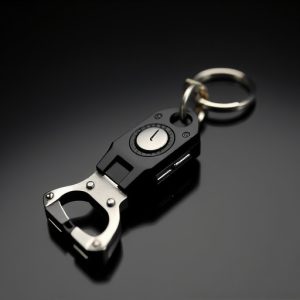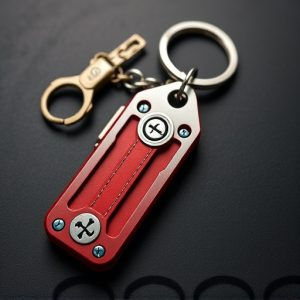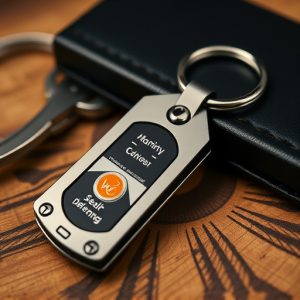Designing Safe & Durable University Approved Keychains: Material to Quality Assurance
Designing University Approved Safety Keychains requires adhering to strict safety requirements, usin…….
Designing University Approved Safety Keychains requires adhering to strict safety requirements, using non-toxic materials like stainless steel or aluminum for durability and corrosion resistance, ensuring structural integrity, and providing clear labeling. These keychains offer enhanced security and convenience for students while prioritizing comfort and style through careful material selection and rigorous testing, ensuring they withstand the demands of campus life.
“Elevate your key chain game with our guide on Metal Defense Keychain Design. In today’s world, a secure and durable University Approved Safety Keychain is essential for students and professionals alike. This article navigates the critical aspects of creating an ergonomic and grip-friendly keychain. From understanding safety regulations to selecting robust materials and implementing thoughtful design considerations, we’ll equip you with insights to craft superior keychains. Additionally, we explore rigorous testing methods to ensure optimal performance.”
- Understanding University Approved Safety Keychain Requirements
- Material Selection for Durability and Ergonomics
- Design Considerations for Grip and Usability
- Testing and Quality Assurance for Optimal Performance
Understanding University Approved Safety Keychain Requirements
When designing a metal defense keychain, it’s crucial to understand and adhere to University Approved Safety Keychain requirements. These guidelines are in place to ensure student safety and prevent potential hazards associated with personal items like keychains. Key considerations include material safety, such as avoiding toxic or sharp components, and structural integrity to prevent sudden failures or injuries.
University-approved keychains must also meet specific durability standards, as they often serve as everyday carry items that endure frequent use and wear. Designs should incorporate robust metal alloys and precise manufacturing processes to guarantee longevity. Additionally, clear labeling or markings indicating compliance with safety standards can enhance product authenticity and provide assurance to students and university authorities alike.
Material Selection for Durability and Ergonomics
When designing a metal defense keychain, material selection is paramount for both durability and ergonomics. Opting for high-quality, robust metals like stainless steel or aerospace-grade aluminum ensures that your keychain can withstand rigorous use and harsh conditions. These materials are not only resistant to corrosion but also provide a solid grip, crucial for preventing accidental drops.
In choosing materials, consider the balance between strength and weight. Heavier metals offer superior durability but may feel clunky in hand. Lighter alternatives like titanium could be ideal for university-approved safety keychains, as they maintain excellent strength while allowing for better ergonomics. This ensures that users can rely on their keychain’s reliability without experiencing discomfort or fatigue during frequent use.
Design Considerations for Grip and Usability
Testing and Quality Assurance for Optimal Performance
Testing and Quality assurance are paramount in designing optimal University-approved safety keychains. Rigorous testing ensures that each keychain meets stringent safety standards, preventing potential hazards and ensuring user reliability. This includes endurance tests to mimic everyday wear and tear, stress tests for strength and durability, and compatibility checks with various locking mechanisms commonly found on university facilities.
Quality assurance processes involve meticulous inspection of every detail, from material composition to assembly precision. Using advanced equipment and expert technicians, manufacturers verify performance metrics like grip strength, keychain weight, and shock absorption, ensuring they exceed the required safety thresholds. This commitment to quality not only guarantees a reliable product but also fosters trust among users, knowing their safety is prioritized.
When designing metal defense keychain grips, adhering to university-approved safety standards is paramount. By selecting durable materials that offer a comfortable grip and prioritizing ergonomic design principles, you can create keychains that not only meet but exceed expectations. Thorough testing and quality assurance ensure optimal performance, making your product a reliable choice for students and professionals alike. Remember, the right combination of material, design, and safety will result in high-quality University Approved Safety Keychains that stand the test of time.


